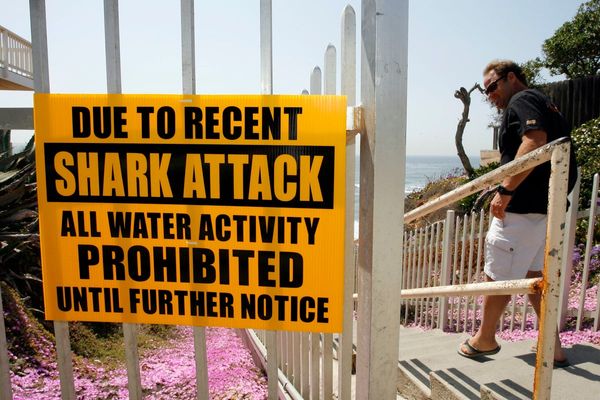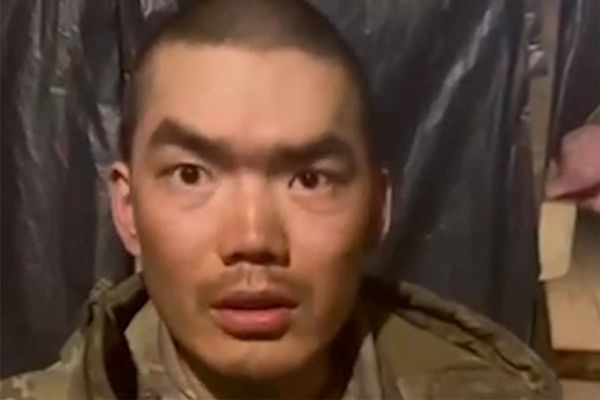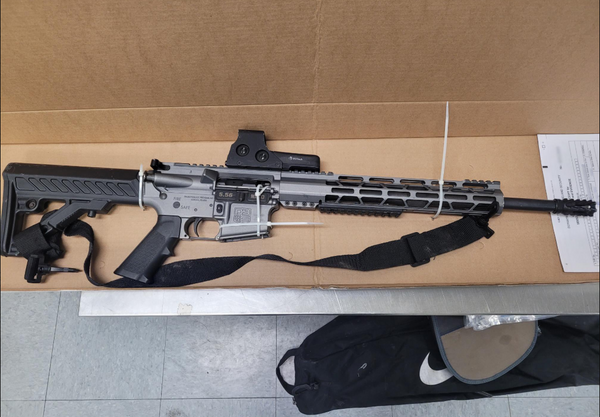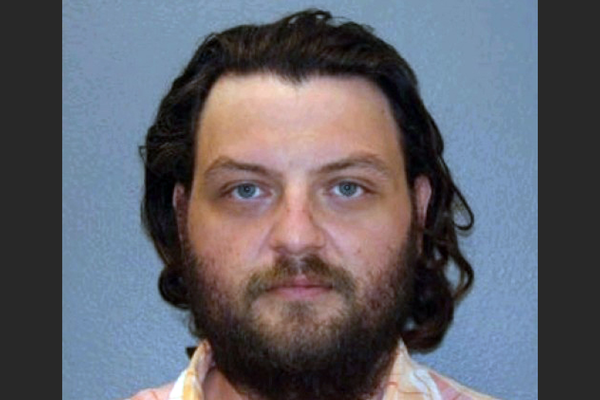
More than 200 years after Francisco Goya commemorated Spanish resistance to Napoleon’s armies in The Third of May 1808, his groundbreaking work on the horrors of war, Ukrainian painters, illustrators and cartoonists are trying to find an artistic expression as Russian bombs fall on their country.
Like other Ukrainians, many artists had to abandon their homes – and their work – when war broke out.

Andriy Roik at his studio in Lviv with Apogee Under the Question Mark
Andriy Roik, who was born and still lives in Lviv in the west, exhibited at home and abroad before the war. “When the war started, all this [artistic] process stopped,” the 27-year-old said. “It was extremely hard to work and react to what was going on in the country. I volunteered by helping refugees who came to Lviv. I drove volunteers to different places. As an artist, I temporarily stopped my activities. The war made me act in a totally different way.”
It took time before Roik could resume his work and learn to live with the constant sound of air-raid sirens, nights spent in bomb shelters and airstrikes that have become the new normal.

Place of Changes 2: Roik says the artwork is about looking from different angles
“At some point I started to adapt to the war,” Roik said. “It kind of turned into a routine. And in my paintings, I have a vision of peace. The peace that I want to see.”
Roik’s first painting since the beginning of the Russian invasion, Apogee Under the Question Mark, represented his vision of a utopian state of peace “after those bloody, inhumane events that are happening now”.
Sergii Radkevych, from Lviv, also struggled at first to focus on his art.

Sergii Radkevych with his work Seven Deadly Sins in his studio in Lviv
“It’s hard to explain,” the 35-year-old said. “It’s a very stressful situation for us all. I have never felt anything like it.”
Radkevych said it was much easier to respond to the war at first by working with people on “mechanical tasks” like buying medicine or volunteering than by creating art. “To me, art is like a speech, a dialogue,” he said. “And it was very hard to build this dialogue. You are destroyed inside, and you just seem unable to find a way to speak.”
A few weeks after the war broke out, Radkevych said he started to receive offers to buy his work from Japan, Europe and the US. He said he decided to use the opportunity to “show the whole world the violence and the aggression” of the conflict, which he described as genocidal. “We need to show [the] … real cruelty, ugly cruelty,” he said.

Fragments of the Body, by Sergii Radkevych
Daryna Momot, 28, is an art expert and co-founder of Cittart, a Ukrainian organisation that helps fund and find shelter and resources for artists. She is trying to promote the country’s painters, cartoonists and illustrators around the world, and has launched an app where people can buy the work of a Ukrainian artist with one click. Twenty percent of each sale goes to humanitarian relief efforts.
“Art helps us realise what we are going through,” she said. “Art captures people’s experiences … This is important for the preservation of memory and its transmission through generations in its true form, as art is much more difficult to manipulate than to rewrite history.”

Ukrainians are sitting in the bomb shelters, by Kinder Album
The day that Vladimir Putin invaded Ukraine, Kinder Album, the pseudonym of an artist from the west of Ukraine, vowed never to leave her country. “I didn’t want to read about the war in the news,” she said, “I felt it was important to stay and feel all these events. I wanted to actually experience them. The whole atmosphere of fear, of shelters and threats, of bombings, helped me to make war art.
“It changed in terms of speed,” she said of her process. “Because now I need to draw, I don’t have time to think, I need to express the feelings of the moment, because tomorrow something else will happen. Before the war, I had a lot of time. Now I don’t. And when I look at my drawings, which I did when the war just started, they capture totally different feelings and emotions compared to more recent ones.”


Kinder Album’s I feel like I’ve been in those houses, and Two friends one wanted to leave one wanted to stay
“Drawing war for me is like art therapy,” she said. “First of all, it is a way to express feelings and emotions. I just put them out of myself. And secondly, it is my routine and something I did before the war, so when I do it, it kind of feels as if there is no war, that these are peaceful times.”

Nicole and Michelle Feldman outside their studio with a mural painted by them in Kyiv
Before the invasion, the Feldman sisters, Michelle and Nicole – collectively known as Sestry Feldman – street artists, illustrators and cartoonists born and raised in Dnipro, had only seen war in movies. “So when it began, we started to panic. I knew I had to do something to keep myself busy, so I started to wash dishes. But then I realised it didn’t help, so I decided to draw.”

Sestry Feldman with their map of Ukraine, in Kyiv
The sisters, who are living in Kyiv, said they turned down a chance to leave the country. During the conflict, they have realised a series of animated cartoons on the war, whose main character is Vladimir Putin. In one instalment, the Russian president, depicted with an odd, square head, is having dinner at his monumental, long table, with an enormous bomb, his inseparable companion.
Another imagines Putin’s life in a bunker.
“Last year we made a cartoon about the future where all people have round heads,” Nicole said. “There is a special machine that makes them square so they’re more suitable for the system. But in cutting part of the head, they’ve lost many of their emotions, like empathy. This is why we represented Putin in that way.”




At first the Feldman sisters drew tarot cards on walls, but when the war broke out they created a tarot card deck dedicated to Ukraine
Momot suggested that during this conflict Ukrainian artists have also been reclaiming an identity “stolen” by Putin’s war.

Alisa Gots in her studio in Kyiv


Alisa Gots: Anxious Pictures and War
“Malevich, Burlyuk, Sonya Delone, even the Kharkiv School of Photography are mistakenly considered ‘Russian’,” Mamot said. “Ukrainian art is not known in the world and is associated with Russia.
“Ukrainian artists are finally able to speak to the world for the whole nation and create values that will be passed down for many years to come. The horrific events that Ukrainians have encountered, through art, are now taking shape.”










